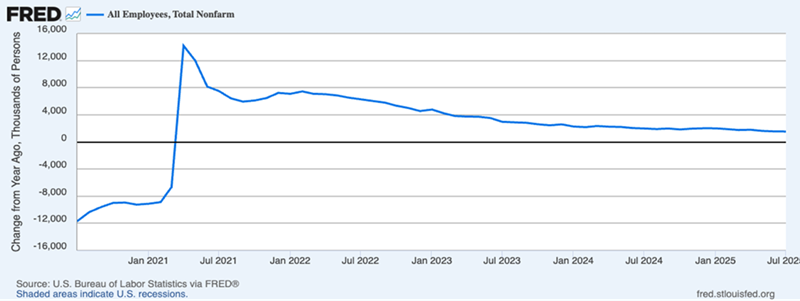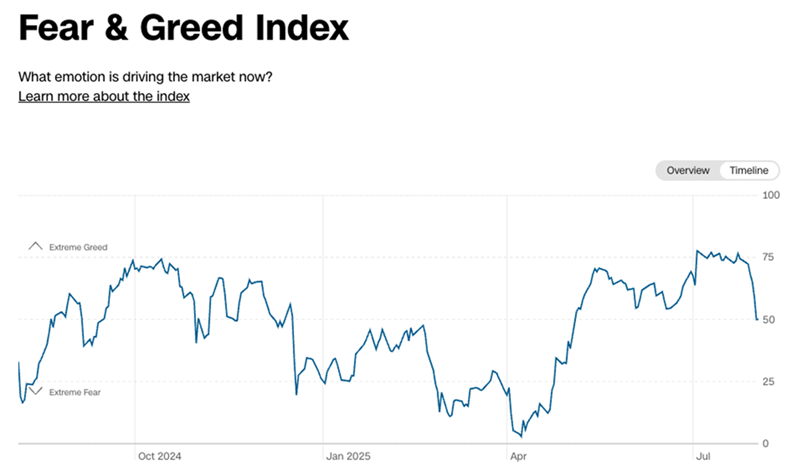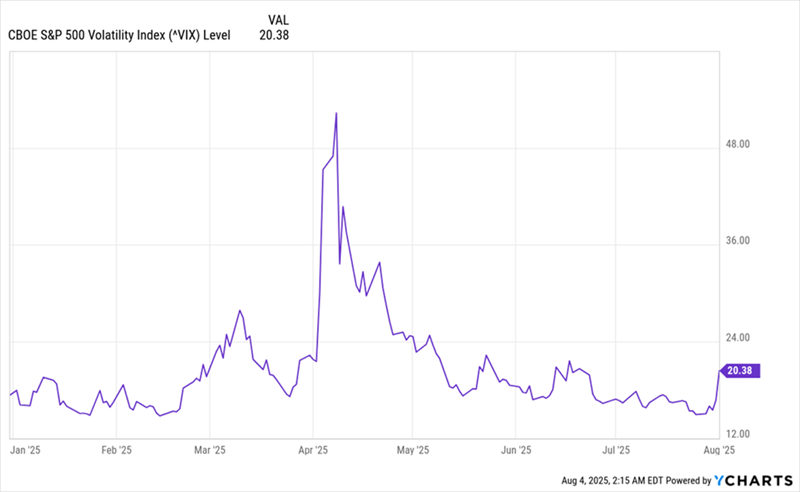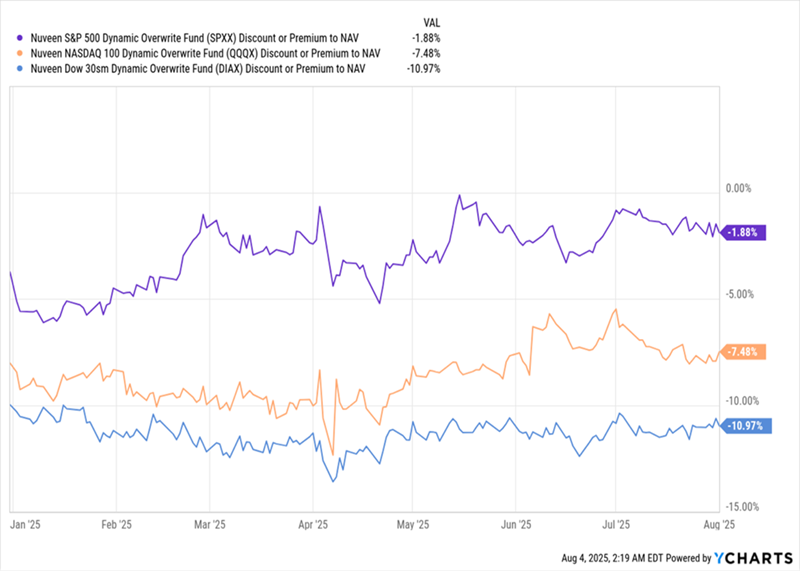Volatility is back! And we contrarians know what to do: Get ready to buy.
And we don’t have to try to time the depths of the next selloff, either, because the three 7%+ paying, “volatility-loving” dividends we’re going to talk about are perfect for this market.
They’re all closed-end funds (CEFs) that see their cash streams grow when markets get skittish. Their secret? They sell covered-call options on their portfolios.
This is a smart, low-risk way they can generate extra income—and send it our way as 7%+ dividends. That’s because these funds charge investors a “premium” for the “option” to buy their holdings at a fixed time and date in the future.
They keep that cash no matter what happens with the trade itself. And their dividends (and our income) directly benefit.
If you’ve been reading my column for a while, you’ll recognize these three covered-call CEFs: the 8.5%-paying Nuveen Dow 30 Dynamic Overwrite Fund (DIAX), the 7.6%-yielding Nuveen S&P 500 Dynamic Overwrite Fund (SPXX) and the 8.5%-paying Nuveen NASDAQ 100 Dynamic Overwrite Fund (QQQX).
We highlighted all three in my July 24, 2025, Contrarian Outlook article, and our opportunity is still on the table here—with DIAX in particular.
Investors Go From Greed to Uncertainty. What’s Next?
I also bring these funds up now because, despite the media’s howling, the current market is simply following an age-old course.
It goes like this: As stocks rise, a major news story sparks worries that their gains can’t last. Stocks then sell off on rising investor fear, until the “smart money” comes in to buy the dip. Then the rest of the crowd takes notice and stocks begin to recover.
Usually, this cycle happens over a short period—a few weeks, maybe a month or two. A good example is the sharp selloff, and speedy recovery, after President Trump announced large tariffs in April.
However, a negative mood can hang on and prolong a selloff. That’s what happened in 2022, when worries of an economic crisis emerged after 2021’s huge run. But that turned out to be wrong, and the economy didn’t start contracting that year, or in 2023, or even in 2024.
As a result, stocks recovered, but it took a long time as pundit after pundit wrongly insisted a recession was on its way.
Okay, so why am I giving a history lesson here? Because we may very well be on the precipice of a new selloff, with volatility rising again. The trigger was that disappointing jobs report from the Bureau of Labor Statistics last Friday, which included large downward revisions to the previous two months’ readings.
It’s worth noting, however, that the economy is still adding jobs, and, if we look at the last five years of data, we’re still far from the calamities of the pandemic.

In other words, we’re in the fearmongering stage of the cycle, with the media running story after story about the so-called “big drop” in the labor market.

A quick look at the CNN Fear and Greed index, as of this writing, shows us that the extreme-greed mood of the last couple months has flipped to neutral, where it was in March and again at the end of April, after the huge crash earlier that month. However, it’s worth noting that stocks are up both from the end of April and from March.
Neutral Sentiment = Stock Profits

So, if sentiment is cooling, we may see stocks sell off in the short term, then recover strongly a bit later. That’s the scenario I find most likely at this time.
Short-Term Volatility: How to Respond
One interesting thing about the current market is that, while volatility has jumped a little, it’s nowhere near the spikes associated with big, steep selloffs. This tells us that a near-term selloff isn’t guaranteed, and one will likely only emerge if the current level of the VIX—the market’s so-called “fear gauge”—rises.
VIX Rising, but Still Muted

As you can see above, the VIX recently spiked from an unusually low level, meaning the market is waking up from weeks of complacency. Obviously, in such a market, you can’t just sell everything: If things stay flattish, you might be able to buy back in, but you’ll miss out on dividends.
And if stocks see a short-term decline, who’s to say how low it will go and how long it will last? This doesn’t feel like a 2022-style drop, partly because Americans are less fearful than they were shortly after the pandemic. So a short-term market dip is the likeliest outcome, with a flat market a close second.
In such a market, the best move is to monetize rising volatility. That’s where our (still-) available opportunity on those three covered-call CEFs comes in.
We’re interested in these three because their call options essentially turn rising fear into cash. Plus there’s a big difference in their discounts to net asset value (NAV, or the value of their underlying portfolios) we can take advantage of.
DIAX Is Unusually Cheap Now

Note that DIAX (in blue above) trades at a near-11% discount to NAV as of this writing, even though its 8.5% yield matches that of QQQX, which has a much narrower 7.5% discount. And SPXX, with its smaller 7.6% yield, trades at just a 1.9% discount!
This is odd, since CEF investors love high yields and tend to price up higher-yielding funds. And as of now, SPXX pays the least and has the smallest discount. That’s the one part of this that makes sense, and the reason is fairly straightforward: The S&P 500 is the best-known index, so many investors blindly pile into SPXX for that reason.
But consider the fact that DIAX has a higher yield (8.5%, you’ll recall), a bigger discount (nearly 11%, as shown in the chart above) and holds solid blue chips like 3M (MMM), American Express (AXP), Boeing (BA), Coca-Cola (KO) and Procter & Gamble (PG).
This means it’s likelier to see higher volatility in the short term (especially since its portfolio only includes 30 stocks—those in the Dow). But that’s a plus, as these option strategies do best in volatile markets. That should raise demand for DIAX, causing its near-11% discount to shrink. And that’s why, right now, DIAX is a compelling hedge for short-term volatility.
4 Funds With Bigger Yields—9.5%!—and “Discount Slingshots” Set to Snap
Riding along as big discounts to flip to premiums is a time-tested way of racking up FAST gains in CEFs—to go along with these funds’ huge dividends.
DIAX is an example, but I also want to tell you about 4 CEFs set for even bigger discount-driven upside. This quartet sports huge, unusual markdowns and even bigger dividends than DIAX: I’m talking about a massive 9.5% average payout.
Don’t miss your chance to snap up these income (and gain!) generators while they’re still cheap. Click here and I’ll walk you through each of them and give you a free Special Report revealing their names and tickers.
